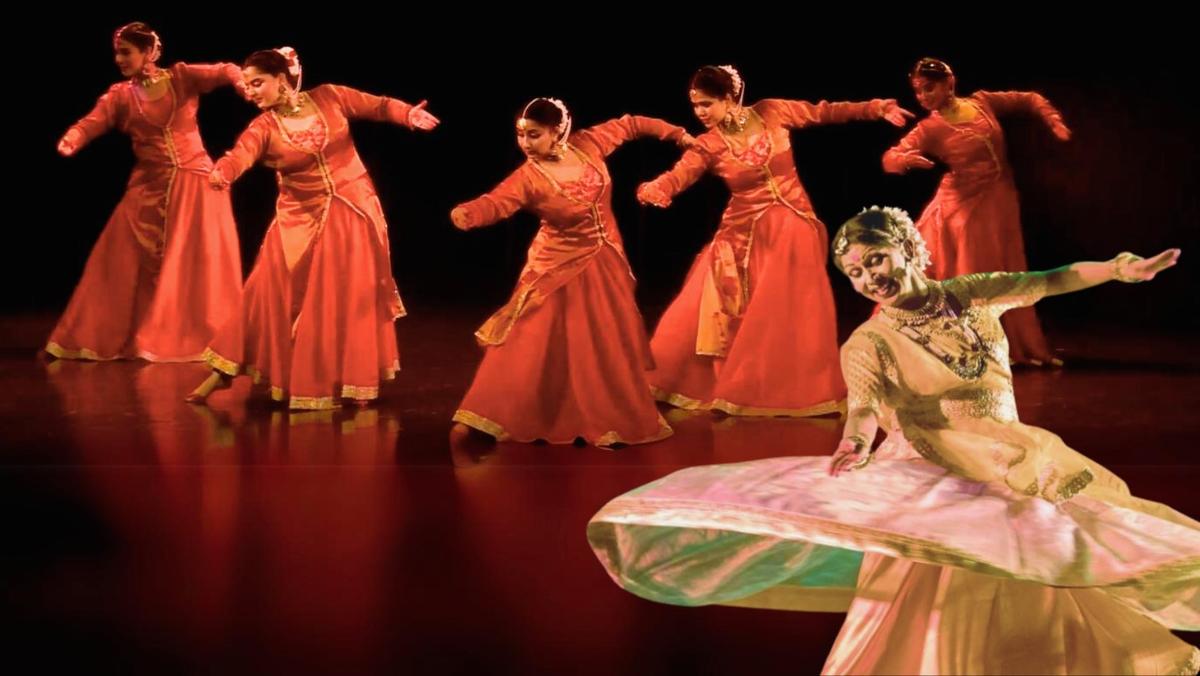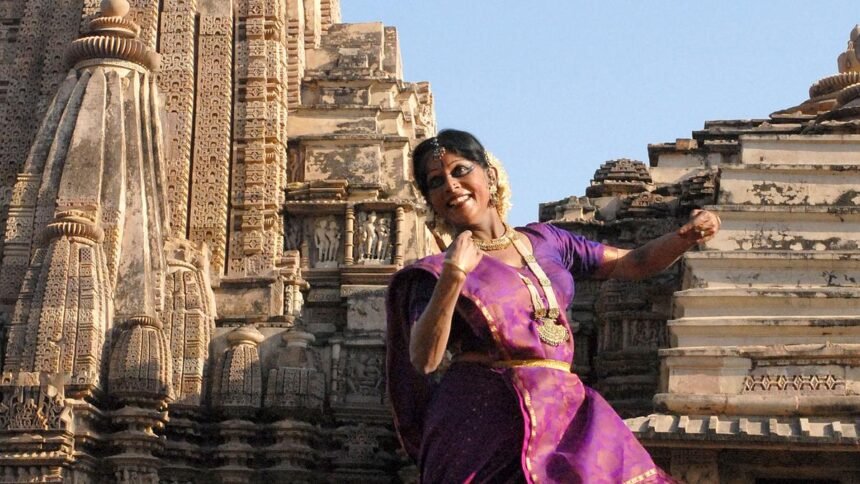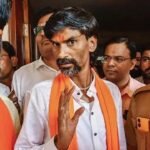Shovana Narayan at the Khajuraho Festival
| Photo Credit: The Hindu Archives
Shovana Narayan was recently felicitated in Delhi by her disciples from around the globe. From the youngest to the most senior dancers, the show featured popular compositions by Shovana, who celebrates her 75th birthday today (September 2, 2024).
With a career spanning over six decades, Shovana looked back nostalgically on her journey in the world of Kathak, right from the time she gave her first stage performance at the tender age of four. “I was stubborn as a child. And like all children, I was extremely energetic and restless,” she smiled. At that time, her father was posted in Kolkata, where as a three year old, she was enrolled under Sadhana Bose, a famous actor and dancer of the time. “I have these vague memories of Sadhana ji holding my legs and arms to make me dance,” she recalled. Thereafter, Shovana’s father was transferred to Mumbai, where she began learning Kathak from Guru Kundal Lal. When the family moved to Delhi, she started training under Pt. Birju Maharaj, who was quite young himself, and in an evolutionary phase as a dancer. “But I would give credit to two more gurus who imparted various technical skills — Odissi dancer Naina Devi and my mother,” she added.
Though dance has always been an integral part of Shovana’s life since childhood, she was also acdemically inclined. After doing her Master’s in physics, she worked as a career officer for the Indian Audits & Accounts Service until 2010. “I never felt it was balancing. I loved my studies, and at the same time, dance was like breath for me,” she said.

Shovana Narayan with her students performing at Kamani Auditorium in Delhi.
| Photo Credit:
Special Arrangement
Being an ardent music lover, Shovana began drawing parallels between Indian and western music, both of which share similar rhythms. This led to a lot of collaborative works with leading ballet, flamenco and tap dancers, and with Buddhist monks for incorporating chants. She has also used the works of western classical composers. “For me, the means of best expressing whatever I felt, is dance.”
Shovana Narayan performing ‘Wisdom and compassion -The way of Budha’ at Ravindra Bharathi in Hyderabad in 2016.
| Photo Credit:
KVS GIRI
Talking about how she brought her own ideas and experiences to her art, Shovana attributed it mostly to her upbringing. For instance, the theme of one of her dance productions was environmental degradation. This was in 1982, when it was not a hot topic. “There was always a lot of discussion at the dinner table about such issues. My mother encouraged us to think, question and express ourselves.”
That was also how Shovana worked on the common features between Flamenco and Kathak, both of which are similar in terms of being rhythmic and footwork-oriented. In 1987, she staged a collaboration with ballet, and one with flamenco two years later. In 1994, she combined all three forms — Kathak, ballet and flamenco — in a single work, which was a huge success.
Interesting milestones
There have been other interesting milestones in her journey. Until 2003, Shovana did not know about the existence of Kathak villages. A journalist in Bodh Gaya drew her attention to them. It led her on a search to find many Kathak villages, which have village code numbers in India’s census. “We went on a research spree, and dug out old archival material. We found that there is still a living temple tradition, which is based more on ancient texts and melody,” she said.
Having seen the evolution of the dance form since the 1950s, Shovana noted the changes that she sees in it today. She commented that until the 1980s, people had time to watch solo performances that were always more than two hours long. “In a sense, it would be a test of how deep and strong our foundation was as dancers. But there were not too many theatres and auditoriums. Now dancers also have the advantage of good lighting, which beautifully highlights movements and emotions.”
What about her plans for the coming years, “I am a seeker. That will continue till my last breath,” said Shovana.








